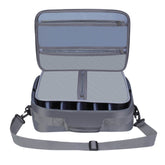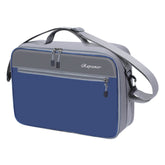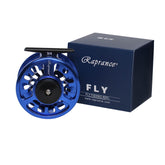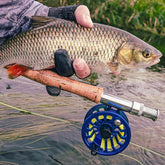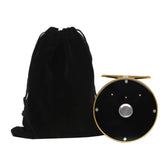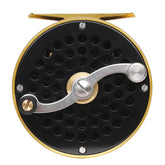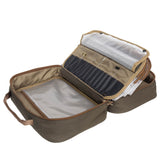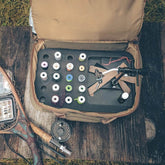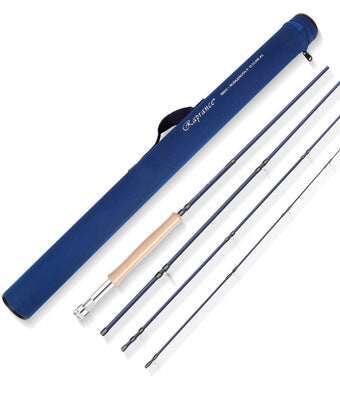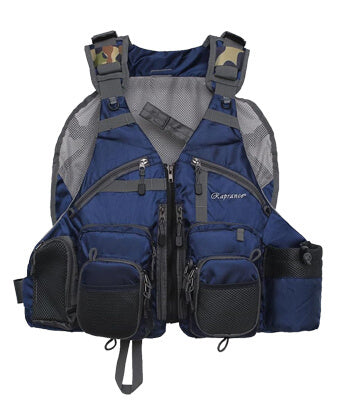Waders Bag: Effective Storage Solutions for Your Fishing Gear
Waders Bag: Effective Storage Solutions for Your Fishing Gear
When it comes to fishing or outdoor activities, having a reliable waders bag is essential for proper storage and transport of your waders. I’ve learned that a good bag not only protects your gear but also makes it much easier to carry everything to and from the water.

Choosing the right waders storage solution can save you time and hassle. I often find it beneficial to opt for a bag that is water-resistant and has enough space for my waders along with additional gear. This keeps everything organized and accessible when I need it most.
Investing in a dedicated waders bag can enhance your overall experience by ensuring your equipment is always in top condition and ready for the next adventure. Knowing how to store and maintain my waders has been a game changer for me in the field.
Understanding Waders and Wader Bags
Waders are essential gear for anyone involved in aquatic activities such as fishing or hunting. Proper storage solutions, like wader bags, are crucial for maintaining the condition and longevity of these items.
Types of Waders
Waders come in various types, each designed for specific environments and activities. The most common types include:
- Hip Waders: These cover from the foot to the waist. They offer mobility and are suitable for shallow waters.
- Chest Waders: These extend to the chest, providing greater protection in deeper water. They are ideal for fishing in rivers and lakes.
- Neoprene Waders: Known for their insulating properties, they are perfect for cold weather conditions.
- Breathable Waders: These are lightweight and allow moisture to escape, making them comfortable for warm weather and active use.
Choosing the right type depends on personal needs and the specific conditions I anticipate facing.
Essential Features of Wader Bags
Wader bags are designed to protect and organize waders and related gear. When selecting a wader bag, consider the following essential features:
- Material: Durable, water-resistant fabric is vital for protection. Look for bags made of nylon or PVC.
- Size and Capacity: Ensure the bag can accommodate the waders, accessories, and room for wet gear.
- Ventilation: Ventilated compartments help prevent mold and odors by allowing airflow.
- Pockets: Multiple pockets facilitate organization for tackle, tools, and personal items.
These features contribute to maintaining my waders in optimal condition and ensure they are readily accessible when needed.
Design and Material Considerations

When selecting a waders bag, I focus on both material choices and color schemes. These factors significantly influence both functionality and visual appeal.
Choosing the Right Material
Durability is paramount in material selection for waders bags. I prefer heavy-duty nylon or polyester, as they offer excellent resistance to abrasions and punctures. This choice ensures the bag withstands rugged environments often encountered during fishing or outdoor adventures.
Waterproofing is another essential feature. I look for bags with TPU coating or waterproof zippers to protect my gear from moisture. This is particularly important if I wade through streams or experience unexpected weather. Additionally, lightweight materials enhance portability, making it easier for me to carry the bag for extended periods.
Color and Aesthetics
When it comes to color, I consider practicality and personal preference. Earthy tones like green or brown blend seamlessly with natural environments, reducing visibility to fish. Alternatively, brighter colors can improve safety during outdoor activities by making me more visible.
Aesthetics also play a role in my choice. I often look for bags that reflect my style, as this personal touch can enhance my overall experience. Features like camouflage patterns or sleek designs can complement my gear, allowing me to express my personality while enjoying the outdoors.
Storage Solutions for Waders
Finding the right storage solutions for waders is essential for prolonging their lifespan and keeping them in optimal condition. I focus on both home storage and transport options that cater to the specific needs of various wading gear.
Home Storage Options
For home storage, I prefer using dedicated wader bags. These bags often feature breathable materials that allow moisture to escape. Proper ventilation minimizes mold and mildew growth, preserving the integrity of the fabric.
Using vertical storage solutions is effective as well. I recommend wall-mounted hooks or racks for drying waders after use. These options keep the waders elevated and away from dirt and debris while allowing air circulation.
I also utilize storage bins with compartments to separate waders from other gear, helping to avoid damage. Including silica gel packets in these bins can further absorb excess moisture.
Transport and Travel
When transporting waders, I prioritize using a sturdy, weather-resistant bag. This protects the waders from potential damage during travel. A bag with multiple pockets is convenient for organizing additional gear, such as boots and accessories.
When packing for a trip, I roll my waders instead of folding them. This method reduces creases and damage, ensuring their functionality is maintained.
Using compression straps on the bag keeps everything securely in place. Additionally, I always check local regulations for carrying fishing gear to ensure compliance during travel.
Functional Features of Wader Storage

When considering wader storage options, two critical functional features stand out: capacity and the main compartment design, as well as comfort and convenience aspects like straps and handles.
Capacity and Main Compartment
The capacity of a wader storage bag is vital for effective organization. I prioritize bags with ample space to accommodate not just my waders, but also ancillary gear such as boots and fishing accessories. A well-designed main compartment allows for easy access.
I often look for compartments that can be adjusted or expanded. This adaptability ensures I can fit all items securely while preventing any unnecessary wear. Some bags feature additional pockets for smaller items, which helps maintain an organized setup.
Comfort and Convenience
Comfort plays a significant role in my selection of wader storage. A padded shoulder strap is essential for long treks, making it easier to carry heavy loads without discomfort. I appreciate bags that offer multiple carrying options, including a sturdy carry handle for quick transport.
Convenience features, like easy-to-use zippers, enhance the experience further. A bag that opens wide allows me to quickly retrieve or store my waders. Consideration of these elements contributes to an overall better fishing experience.
Maintenance of Waders and Wader Bags
Maintaining waders and wader bags is essential for prolonging their lifespan and functionality. Proper drying and cleaning techniques help prevent damage and ensure that they perform well when needed.
Proper Drying Techniques
After a fishing trip, it’s crucial to dry wet waders properly. I always turn my waders inside out to help them dry faster. Hanging them in a well-ventilated area, away from direct sunlight, prevents material degradation caused by heat exposure.
I use a wader hanger or a clothesline for effective air circulation. It's important to avoid using heat sources like radiators or hair dryers, as these can warp the materials. After drying, I check for any signs of wear or damage, which I address immediately to maintain their integrity.
Cleaning and Care
Cleaning waders is essential for removing dirt and contaminants. I rinse mine with fresh water after every use, focusing on the seams and closures. For deeper cleans, I use a gentle soap formulated for waterproof materials, ensuring I follow the manufacturer’s instructions.
When it comes to wader bags, I wipe them down with a damp cloth and mild soap, avoiding harsh chemicals. It's important to air out both bags and waders after each use to prevent odors and mold growth. Regular maintenance helps in identifying damage early, particularly at stress points, ensuring both waders and bags remain in optimal condition for future outings.

